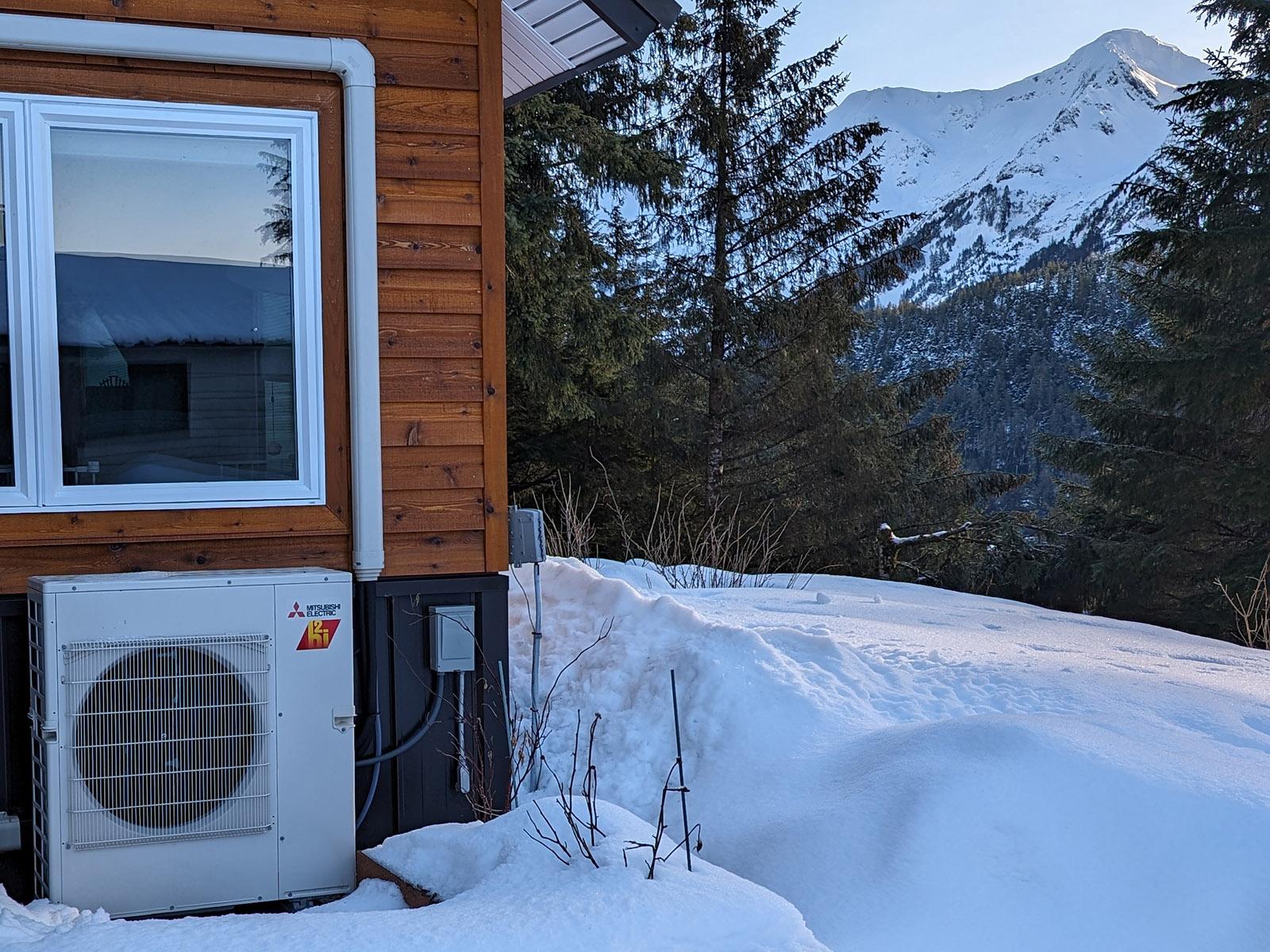By Tim Ledbetter
It’s rural. It’s cold. It’s remote.
It’s perfect.
There may be few better real-life laboratories in the United States than Cordova, Alaska, to evaluate the challenges and benefits of transitioning to new, cleaner methods of home heating in a colder climate.
Researchers at Pacific Northwest National Laboratory (PNNL) have been conducting a project in the community for the past year, focused on “electrification”—in this case, transitioning oil-based home heating units to electric heat pumps that operate without the need for interior air ducts. Deployed nationwide, this type of electrification can help America meet goals to reduce carbon emissions through use of clean energy sources.
The project has shown there’s not only significant interest from Cordova homeowners in switching to electricity for heating, but that it’s possible to balance existing electrical power grid resources and new demand. The effort also has identified lessons learned that may help other remote communities moving toward electrification.
Along with the practical and technical aspects of the project, there’s an equity component. The Department of Energy’s Building Technologies Office, which funds the project, seeks to improve the efficiency of the nation’s homes and buildings in a just and equitable manner that benefits all sectors of American society.
“Justice and equity include working with communities that experience roadblocks in adopting new technology, and perhaps don’t generally receive the same type of services as the rest of the country,” notes PNNL’s Sam Rosenberg, the project’s lead scientist. “Our work will help reduce barriers and provide a better understanding of the realities and needs of these areas.”
Project puts theories to the test
Cordova, a coastal community of approximately 2,600 people located about 150 miles southeast of Anchorage, is accessible only by air and water. Local homes typically rely on fuel-oil-fired furnaces for heat. The oil is delivered to the community via ocean tankers, which serve an important need, but also evoke memories of a damaging 1989 oil spill in the region. In some homes, wood stoves serve as backup heat. The community’s electrical power source essentially is a self-contained “microgrid” with all electricity generated locally and no power lines connecting Cordova to a larger supply.
###
About PNNL
Pacific Northwest National Laboratory draws on its distinguishing strengths in chemistry, Earth sciences, biology and data science to advance scientific knowledge and address challenges in sustainable energy and national security. Founded in 1965, PNNL is operated by Battelle for the Department of Energy’s Office of Science, which is the single largest supporter of basic research in the physical sciences in the United States. DOE’s Office of Science is working to address some of the most pressing challenges of our time. For more information, visit https://energy.gov/science. For more information on PNNL, visit PNNL’s News Center. Follow us on Twitter, Facebook, LinkedIn and Instagram.
